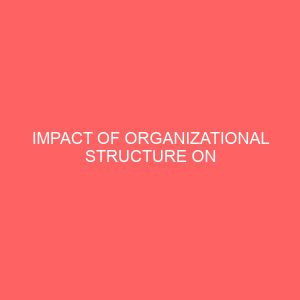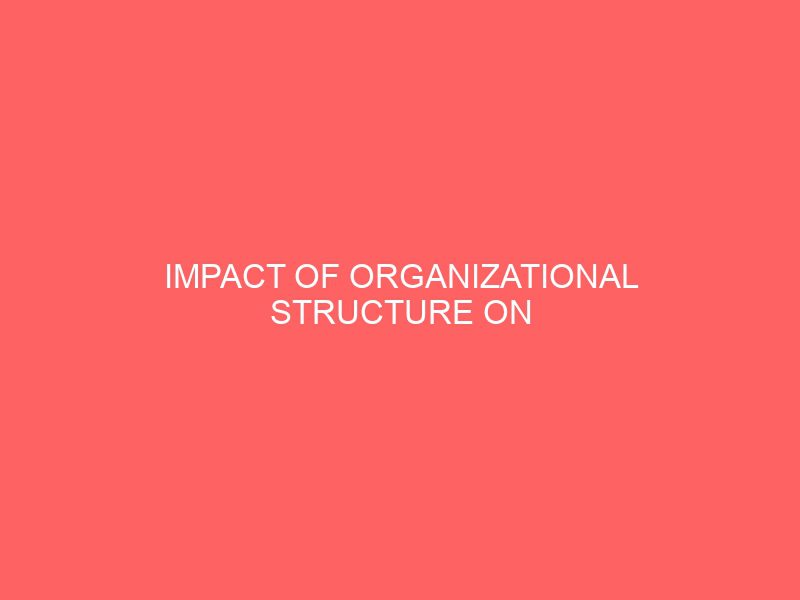Description
CHAPTER 1
1.1 BACKGROUND OF THE STUDY
The establishment of management structures for the management of a project is one of the important activities required for accomplishing goals. Shaker (2003) in a publication reviewing Peter Druckerbooks, who argues that management is the function, which involves getting things done through other people. Basically this involves the following, which are all aspects of setting organization matters for performance: Getting Managers with leadership capabilities, Getting staff with competence and appropriate skills, Placing responsibilities on people for successful completion of the project, Establishing clear delegated authorities Defining proper communication lines. Since these outlined duties relate to the matters concerned with internal organizational running, it may be argued that they are solely for the purpose of improving only organizational performance. Kotnour (2000) asserts that some of the internal organizational matters such as organizational learning practices increase project success too. The tendency to have the project success increased therefore lies in the ability of the manager to develop certain strategies within the organization. The research intends to investigate the impact of organizational structure on inter personal relationship in large organization
1.2 STATEMENT OF THE PROBLEM
The problem confronting the research is an assessment of the impact of organizational structure on interpersonal relationship in large organization.
The research intends to analyze organizational structure and determine its functionality to enhance interpersonal relationship in large organization.
1.3 RESEARCH QUESTION
1 What constitute the nature of organization structure?
2 What are the types and functionality?
3 What is the impact of organizational structure on interpersonal relationship in large organization?
1.4 OBJECTIVE OF THE RESEARCH
1 TO determine the nature of organization structure
2 To appraise the types and functionality
3 Todetermine the impact of organizational structure on interpersonal relationship in large organization
1.5 SIGNIFICANCE OF THE STUDY
The research shall project organization structure as a unifying factor in enhancing interpersonalRelationship in large organization towards the realization of organizational aims and objective.
1.6 STATEMENT OF HYPOTHESIS
H0 Organizational structure is not significant in large organization
H1 organizational structure is significant in large organization
H0 The level of interpersonal relationship in large organization is low
H1 The level of interpersonal relationship in large organization is high
H0 The impact of organizational structure on interpersonal relationship in large organization is low
H1 The impact of organizational structure on interpersonal relationship in large organization is high
1.7 SCOPE OF THE STUDY
The research profers an assessment of the impact of organizational structure on interpersonal relationship in large organization
1.8. DEFINITION OF TERMS
ORGANISATION STRUCTURE
Mintzberg (1983) defines the organizational structure as; “…the sum of total in which its labour is divided into distinct tasks and then its coordination is achieved among these tasks.” There is no such thing as a best organizational structure. One needs to carefully consider the reason for why the organization is there and Mintzberg (1983) means that the structure should be selected to achieve an internal harmony, as well as alignment with the organization’s situation (Hatch, 2006; Mintzberg, 1983).
FORMALIZATION
Formalization is defined as the emphasis placed onfollowing rules and procedures when performing one’s job (cf. Pugh et al. 1968).
Formalization reduces confusion because staff know what they are expected to doduring product development and this helps coordinate effort, and facilitate productiveexchanges between managers (Thompson 1967). Further, formalization establishesmanagers’ role expectations and expected information flows from their counterpartson product development projects (Moenaert and Souder 1990a).







